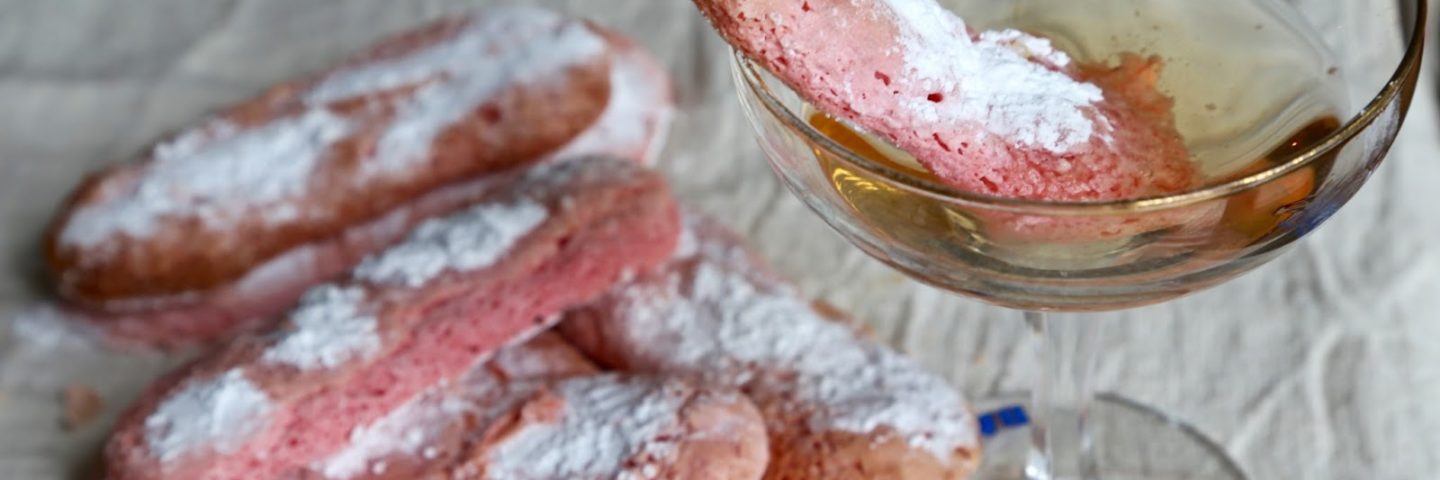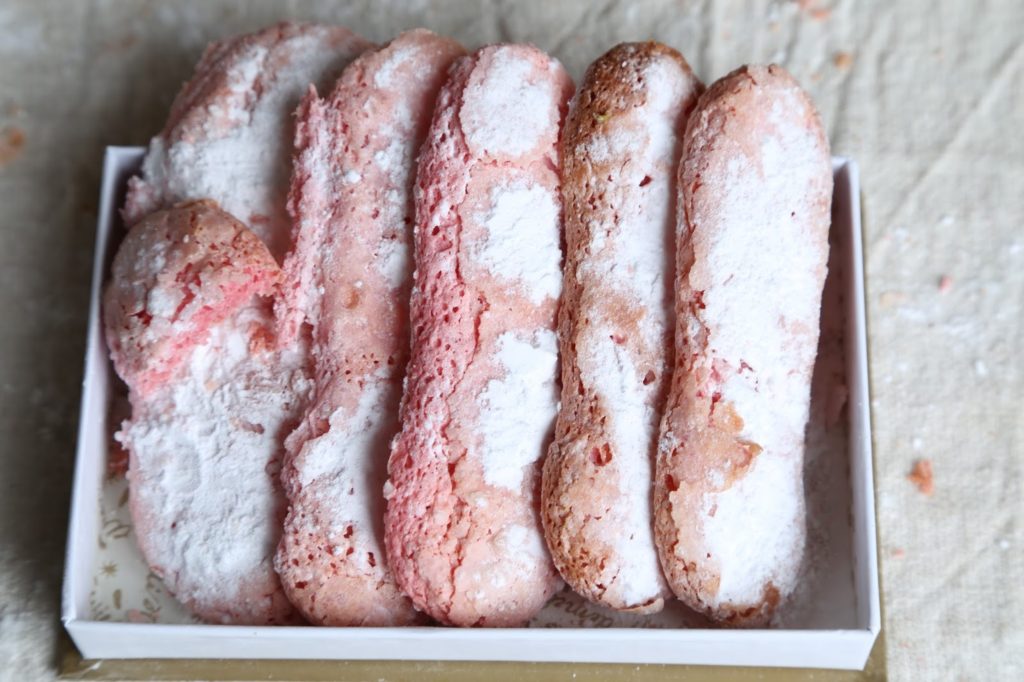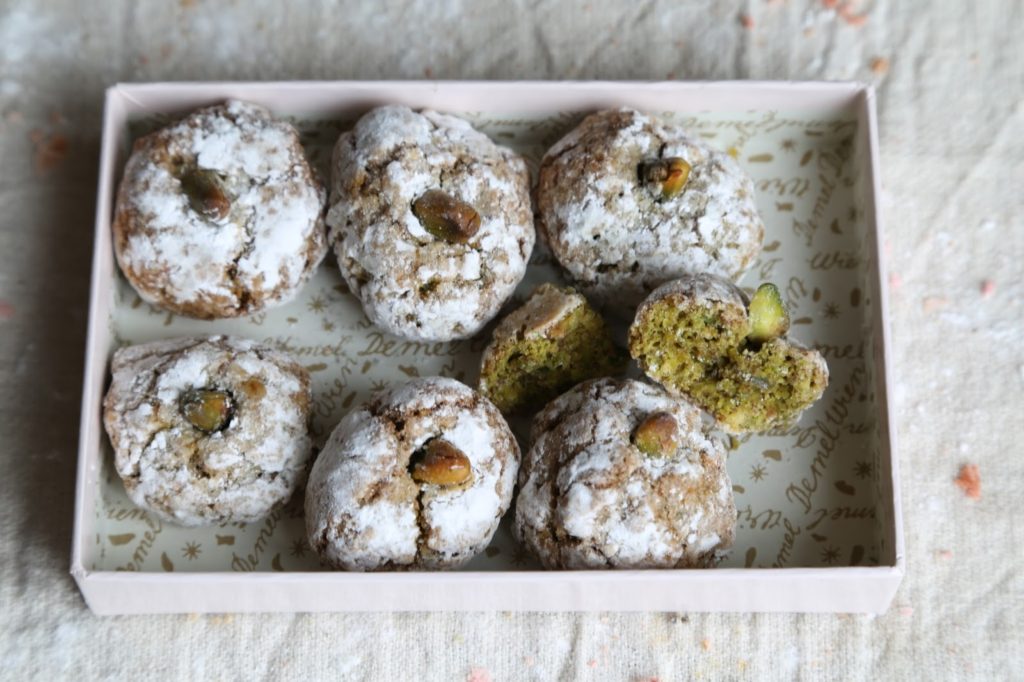[twitter style=”horizontal” float=”left”]
[fblike style=”standard” showfaces=”false” width=”450″ verb=”like” font=”arial”]
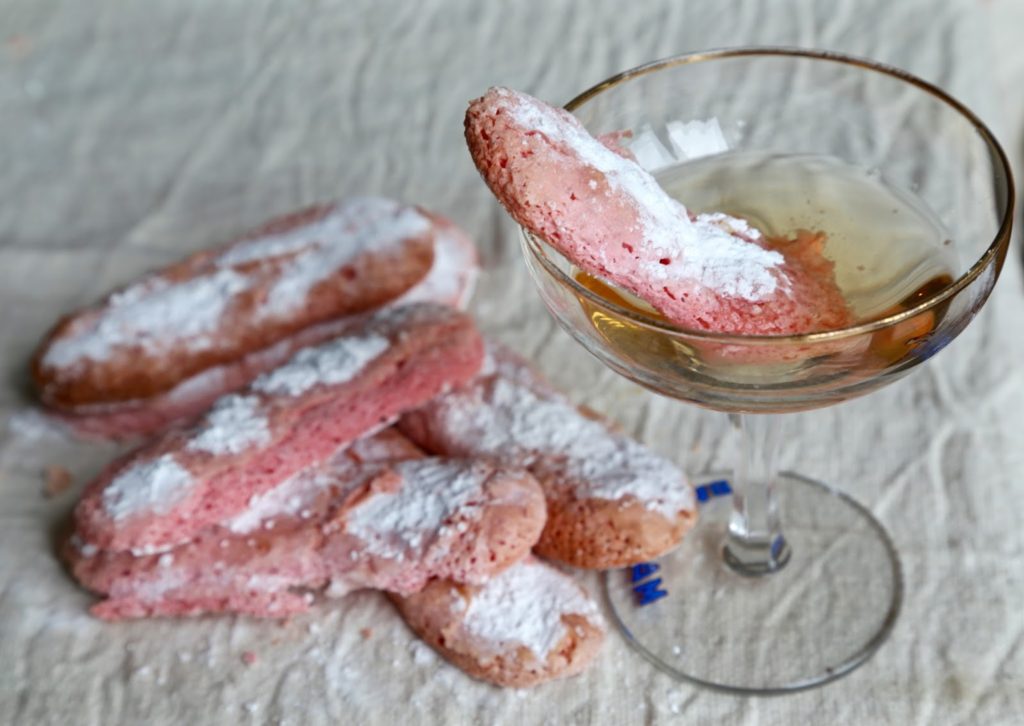
Long ago, bakers discovered that if you bake something twice – bi (two) cuit (cooked) – it becomes crunchy and lasts longer, hence ‘biscuits’.
One of the earliest biscuits is the Ship’s Biscuit, or hard tack as it’s often known. These would be cooked four times in order to withstand the dampness of being at sea for long voyages, and served at every meal.
I made hard tack for a historical supper club based on the books of Patrick O’Brian, author of Master and Commander. Even twice baked rather than four times, I had to warn guests that I would not be responsible for their dental bills.
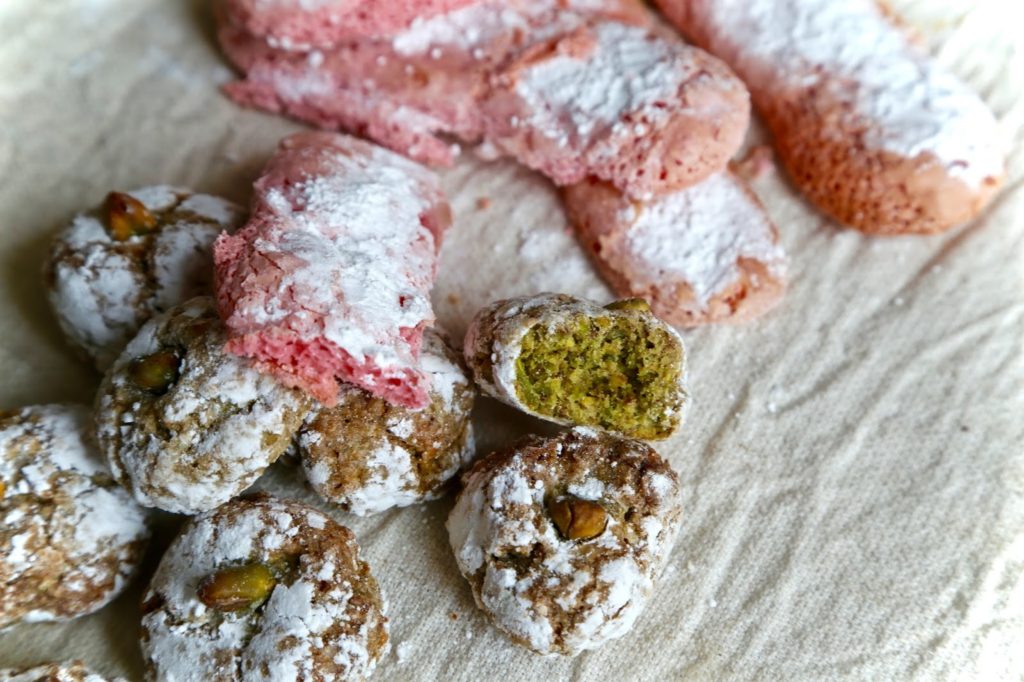
Sweet and savoury
The British are biscuit lovers; unlike the French we eat cheese with biscuits rather than with bread as the French do.
We also love to dunk them in tea. In France they will often dunk buttered (unsalted) bread into their coffee (making an early ‘bullet proof’ coffee) but when they dunk biscuits on the continent, they prefer to dunk into alcohol.
For my Patrick O’Brian supper club I made ratafias, a little like macaroons, which they would drink but not dunk in a glass of Madeira wine. You could try a gorgeous amber Madeira wine from Portugal, Henriques & Henriques Malvasia 10 years, at £18 a bottle.
In Italy they dunk biscotti into Vin Santo (holy wine), but the original Vin Santo comes from Greece, which WineTrust stocks, Santorini Vinsanto, Argyros Estate at £26. This fortified wine is comprised of three native grapes (80% Assrytiko, 10% Athrini, 10% Aidani) from Santorini, a hot, dry volcanic island that grows vines in a low lying basket shape to avoid destruction by the winds.
Another sweet Italian dry biscuit is cantucci, sometimes called cantuccini. What is the difference between biscotti and cantucci? According to one source it’s that biscotti are larger and contain fat. I’d try these with a low alcohol (only 5.5%) white refreshing Italian Vajra Moscato d’Asti at £12.95.
In Puglia they dip taralli, a dry crunchy plain biscuit which is either sweet or savoury tied into a knot, into wine. Taralli are one of the oldest foodstuffs, we a recipe that originally hails from Greece. I’d recommend a Sicilian wine Zibbibo, Gibelè, at £11.75 for dipping purposes.
In Spain anise and olive oil thin Tortas de Aceite, a kind of thin flaky sweet and salty crispbread, are popular eaten with cheese, coffee and sherry. There are different flavours, some with orange or lemon.
Dip these into a dry fino sherry ‘Innocente’, from Valdespino, Jerez at £8.95 or a Castano dulce at £15, the latter particularly good with a cheese board.
In France, in the Champagne region, there is a celebrated speciality ‘biscuits roses de reims’, a sugary pink boudoir style biscuit that I have tried to recreate. Actually I think mine are tastier because I’ve added rose water. The recipe is below. Dip these into Champagne or sparkling wines such as a pretty pink Moscato, Innocent Bystander at only £5.75 for a half bottle or going more upmarket in terms of pink fizz, an English ‘champagne’ style Nyetimber Rosé Brut at £35.00 or classic champagne such as Gremillet Rosé d’Assemblage Brut at a bargainous £25!
Here are a couple of recipes for you to try at home, the perfect end for a dinner party.
Biscuits Roses de Reims with rosewater
The original recipe is a secret so I spent several days testing and this is the closest I could get to it. I added rosewater which isn’t in the original recipe, and actually I think this is a bit nicer. If you don’t like rosewater you could leave it out.
I’d get out a few bowls for this to weigh your ingredients into; otherwise it’s easy to make a mistake with the order of ingredients. These will be piped by hand so they won’t look exactly like the Biscuits Roses de Reims but they will look like funky sponge fingers.
Makes 40
Equipment:
- You will need a piping bag (disposable is fine) and a 2.5 cm plain nozzle
- A stand mixer with a whisk attachment
- A silpat or silicone parchment paper
- A flat biscuit oven tray, preferably two
Ingredients:
- 5 large eggs, separated into yolks and whites
- 135g white caster sugar, divided into two bowls
- 1 teaspoon pure vanilla extract or 1 vanilla pod, split in half and scraped out
- 3-4 tbsps rose water
- A big squirt of dark pink food colouring
- 60g plain or 00 flour
- 60g potato flour
- 1/4 teaspoon salt (I often use vanilla salt)
- 1/4 teaspoon cream of tartar
- 40g caster or granulated sugar
- 40g icing sugar for dusting
Method:
Preheat your oven to 200ºC
In a bowl beat the egg yolks with half the caster sugar until paler and custardy. Add the vanilla extract, rose water if using, and pink food colouring. Make this darker than you want at the end because the colour will get diluted by the rest of the ingredients.
Sift the two types of flour and the salt over the egg yolk mixture, do not mix. In another bowl, the stand mixer with whisk attachment, beat the egg whites and cream of tartar until firm then gradually add the rest of the sugar until it is firm and shiny.
Carefully, a third at a time, add the egg white mixture to the egg yolk and flour mixture and fold it into it without deflating the mixture too much. Once combined, put the tip into an icing bag and twist the icing bag around the tip once and tuck it inside the tip a little then stand it in a tall glass or jug to fill it. The twist and tuck is to prevent the mixture falling out the bottom of the icing bag. Scoop, carefully, the mixture into the icing bag.
Pipe 2 x 7 cm lines onto your parchment/silpat covered baking sheet, leaving a 2 cm space between each ‘finger’. Then scatter first the caster/granulated sugar onto the biscuits then the icing sugar. Leave to settle for ten minutes.
Bake for 5 minutes. You don’t want to bake it for too long as you will lose the pink colour. However if it doesn’t feel crispy, place in a very low oven (or on the lid of your Aga) until the biscuits dry out.
Remove from the oven once crispy and carefully prise them with a sharp fish slice from the parchment/silpat and transfer them to a rack to cool.
Best eaten on the day but if you want to eat them later, crisp them up again in a low oven.
Pistachio cantuccini
These are truly delicious and very easy to make. The only fiddly and lengthy part is peeling the skins (not the shells) off the pistachios to make sure you have bright green biscuits. You can avoid that by buying pistachios nibs which are more expensive.
Makes about 15
Ingredients:
250g pistachios, shelled and peeled
100g caster sugar
1/2 tsp vanilla essence/vanilla paste or 1 bean split and scraped out
2 (60g) egg whites
Pistachio nibs to decorate
Icing sugar
Method:
Preheat the oven to 180ºC
Skin the pistachios by pouring boiling water over them in a heat proof bowl then removing them and rubbing off the skins with a rough tea towel. Or use your finger nails. This takes ages so sit yourself down with a laptop and Netflix movie while you do it.
Grind the pistachios and half the sugar in a food processor until they look like rough sand.
Combine the egg whites with the vanilla, then add the pistachio mix and the rest of the sugar.
Shake a little icing sugar onto parchment paper or a silpat on a baking tray. Pour some icing sugar into a plate and using a tea spoon, make small balls of the pistachio/egg white mix by rolling them in the icing sugar. Press a pistachio nib in the centre and place on the baking tray with 2 cm gap between each.
Bake for 7 minutes and remove from the oven. Let them cool on a rack and sift some more icing sugar over the top. Delicious!
Do you have any biscuit and booze combinations that you like? Do let us know in the comments.
[twitter style=”horizontal” float=”left”]
[fblike style=”standard” showfaces=”false” width=”450″ verb=”like” font=”arial”]

